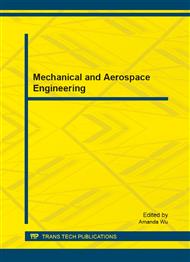p.456
p.461
p.465
p.471
p.477
p.482
p.487
p.492
p.497
Simulating the Granular Materials Flow in Rotary Kilns
Abstract:
Granular materials flow is discussed by different models. These models are 2D and each of them includes some special effects of two phase flow. For simulating the 3D flow of granular materials in rotary kilns, a model based on finite volume method (FVM) is presented which includes axial and rotational motion and also all of the effects of two phase flow such as: viscosity effect, particle size, rotating velocity of kiln, kiln tilt, etc. This method is used according to a real kind of rotary kiln and hypothetical clogging inside of kiln. The simulation results in both 2D and 3D views are presented in this article. These results are compared with Kramer’s model and they are acceptable. Also in this simulation, granular flow over the clogging is reviewed by using hypothetical clogging in the rotary cement kiln.
Info:
Periodical:
Pages:
477-481
Citation:
Online since:
November 2012
Authors:
Price:
Сopyright:
© 2012 Trans Tech Publications Ltd. All Rights Reserved
Share:
Citation:


